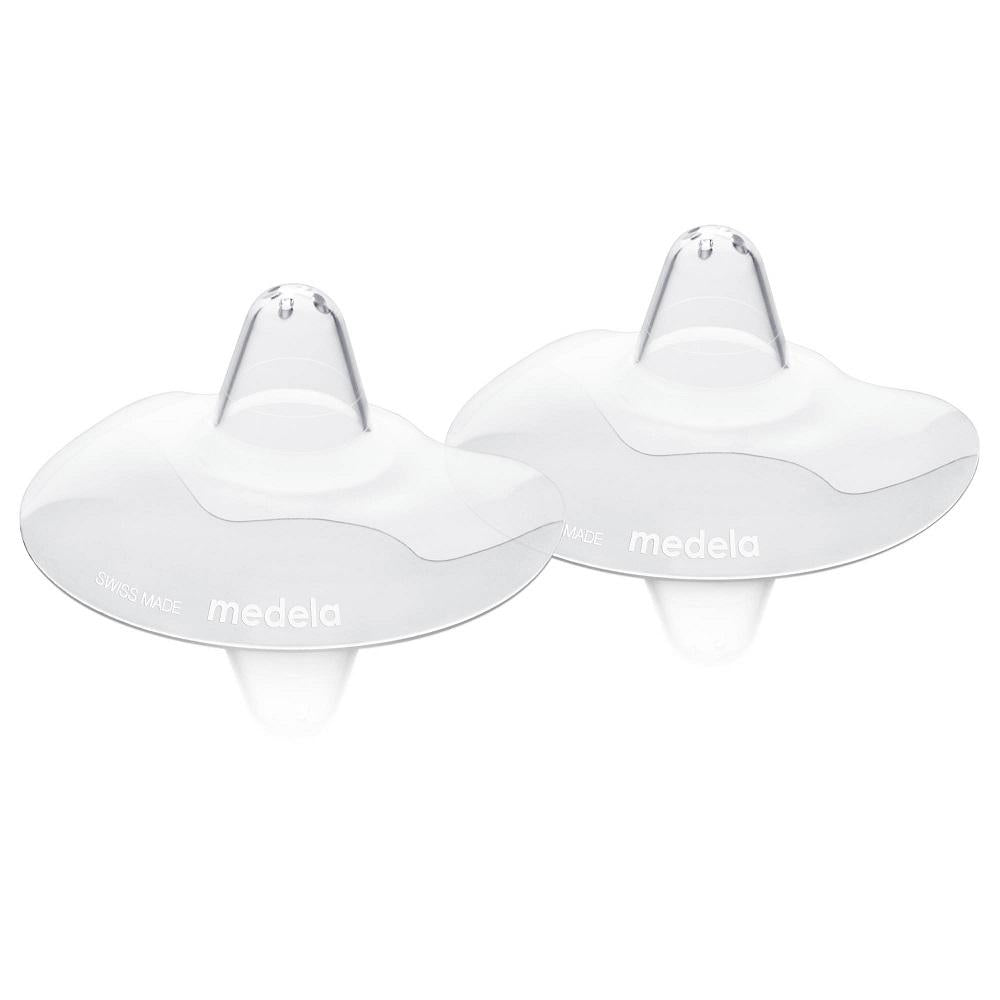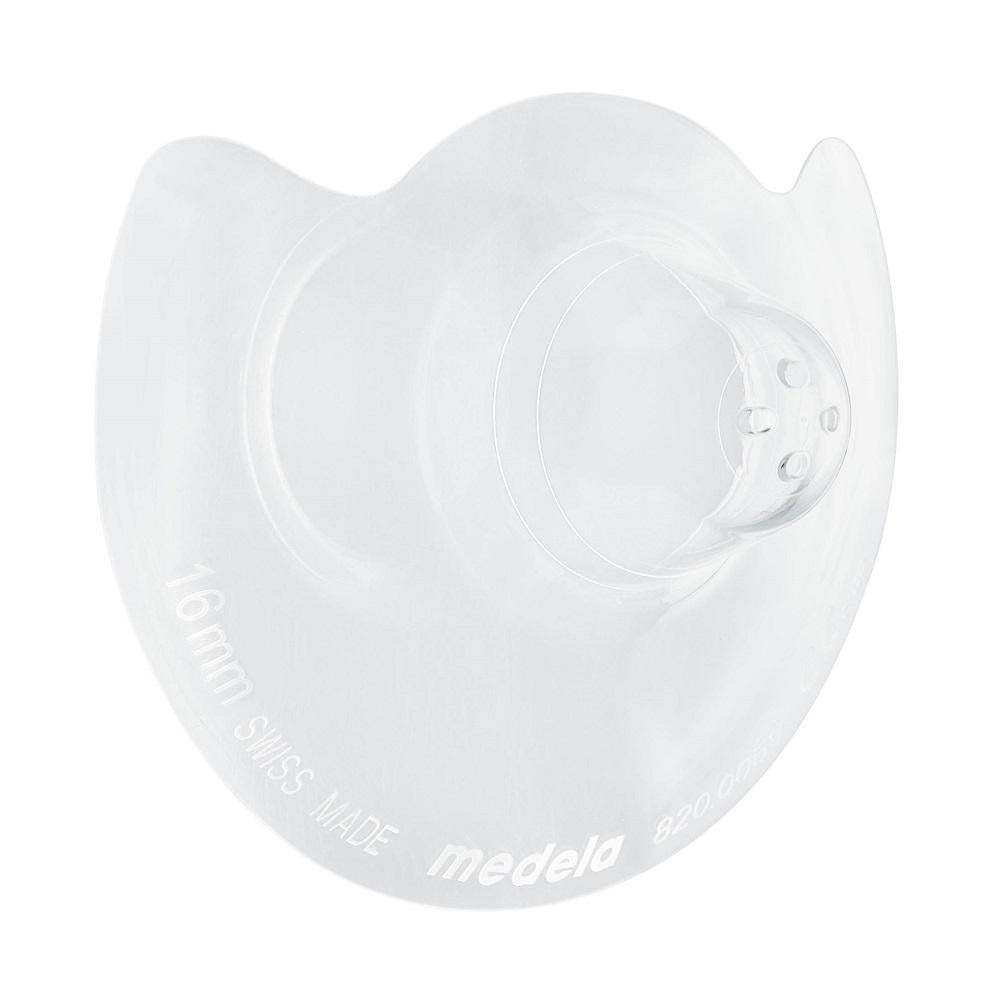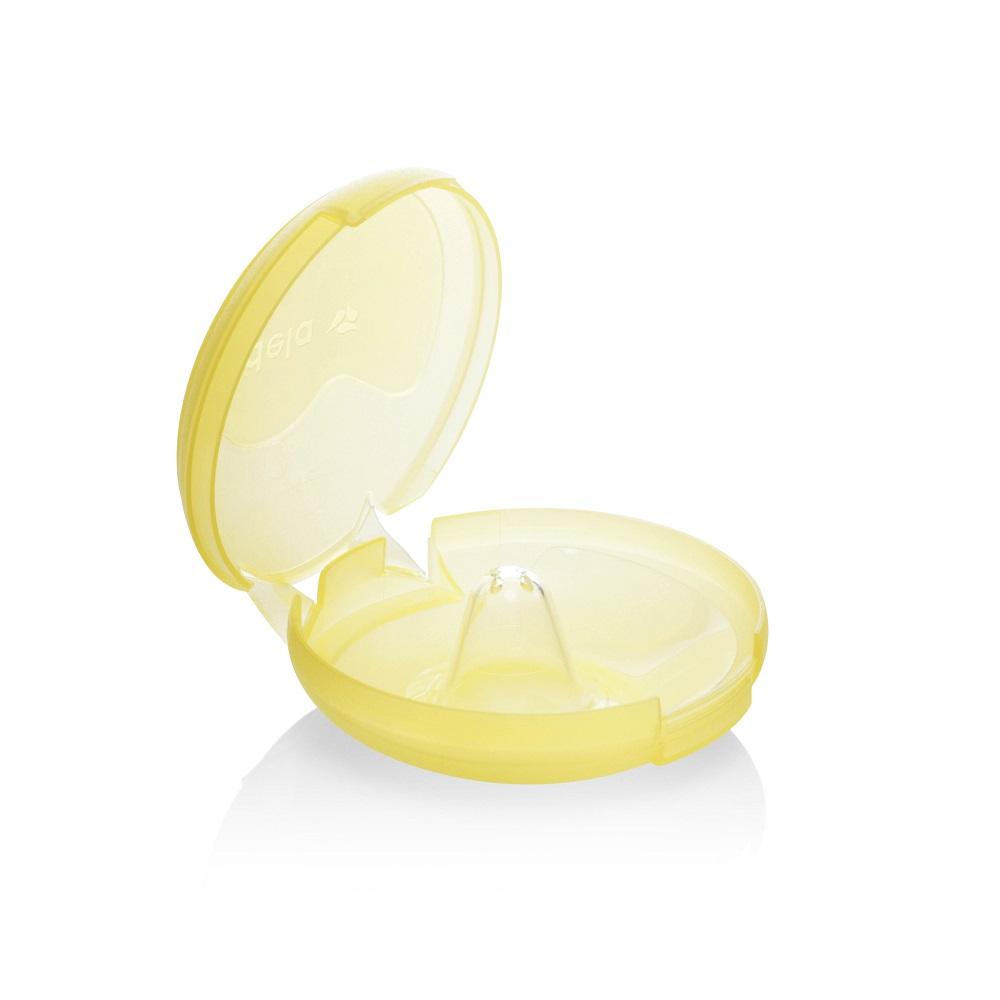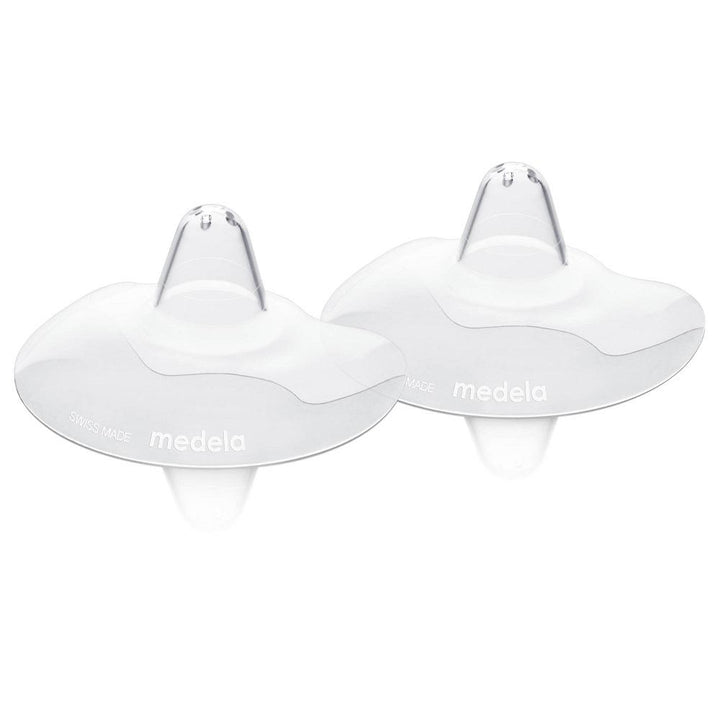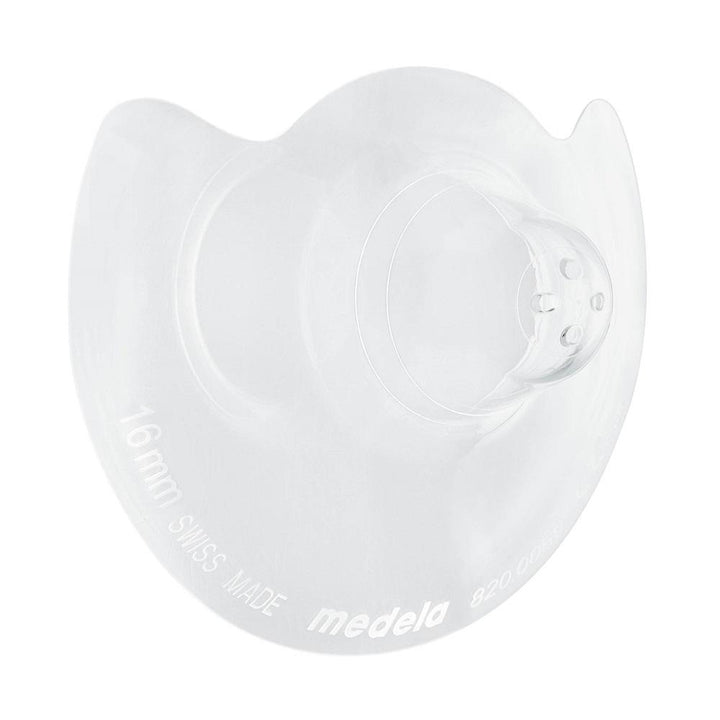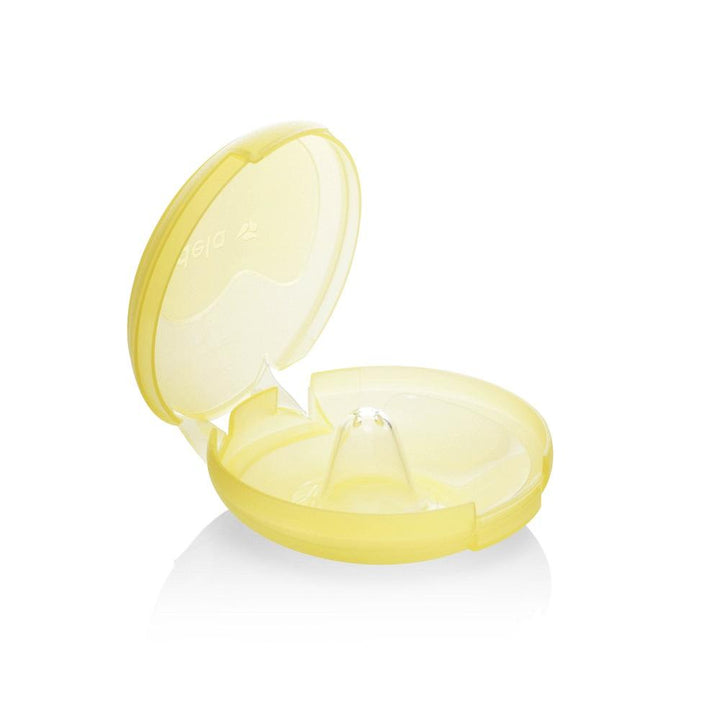Medela’s Contact™ Nipple Shields make breastfeeding possible when latching on is difficult or painful by protecting sore nipples and helping your baby attach more easily.
- Includes 2 shields and 1 storage case
- Enable breastfeeding when latching on is difficult or painful or if you have flat or inverted nipples
- Protect sensitive, dry or cracked nipples during breastfeeding
- Made from transparent, ultra-thin, soft silicone that’s comfortable on sensitive skin
- Safe and taste-free for your baby
- Shape maximizes skin contact between you and your baby
- Set of two shields means you always have a spare on hand
- Included case means you always have a safe place to store your nipple shields
- Available in three sizes: S/16 mm, M/20 mm, or L/24mm
- BPA free
- Silicone
- Made in Switzerland
When to Use
Flat or inverted nipples: Some babies have difficulty latching onto the breast. Flat or inverted nipples can contribute to latch-on problems. A nipple shield gives the baby a larger area to latch onto, while breastfeeding helps draw the nipple out. This makes it easier for the baby to subsequently latch onto the breast without the nipple shield.
Latch-on difficulties: Other babies are slow to learn how to latch on in the first week. The use of a nipple shield can temporarily assist the baby in attachment to the breast, until the baby has learned the proper technique without the use of a shield. Silicone has been used by Medela in the manufacturing of their Nipple Shield because it has minimal odor and taste.
Overactive let-down: Occasionally a mother will have an overactive let-down response which can cause a baby to choke and pull off the breast. Using a nipple shield can slow down the flow of milk, thus enabling the baby to continue nursing. As the baby matures and becomes more coordinated with the sucking and swallowing, the nipple shield is no longer needed.
We charge flat rates for shipping, based on postal code and service selected. We've even got FREE shipping options for qualifying orders. Shipping charges are automatically applied based on order total and ship-to address. All orders over $500 will require a signature upon arrival.
Our goal is to pick, pack, and ship all in-stock items two business days. Shipments are sent Monday to Friday, excluding statutory holidays. We have carefully selected the fastest, most reliable shipping methods for all eligible products on our site. Your order will ship via UPS, FedEx, Purolator, Canpar, ICS, or Canada Post. If you live in an area that is a shipping nightmare and have a preferred carrier, please let us know via the notes section on the order or a follow up email. Deliveries are typically made Monday to Friday, excluding statutory holidays, as our shipping partners do not typically deliver on the weekends or on statutory holidays.


